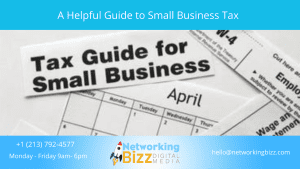I’ve been in the midst of a property renovation for the last few months and this has involved a lot of buying items online.
Hours of reading reviews looking for the best-recommended product and then, when I’m at the point of sale, searching for the best price so I can complete my purchase.
For many items, I have found that my choice of a wide variety of retailers is not down to the cheapest price (however price-savvy I may be). Instead, I have actively tried to buy many of the bigger appliances from John Lewis (a department store in the U.K.).
So, what is the pull of a brand at the “zero moment of truth” that has more power than making cost savings?
John Lewis is an employee-owned business, which means that employees are involved in key decisions and they put their people first.
For me, John Lewis represents a brand that has values and that I can rely on them. Even when I bought a mouse three years ago and no longer had the receipt, they replaced the item when it stopped working.
John Lewis has built a reputation on their customer service. And, in an age when businesses are competing over price, they have gone the other way to ensure offering the best customer experience and satisfaction to overcome the brutal high street trading conditions we have in the U.K.
So now, I want to buy as much from JL as possible as I know that I can rely on them when things go wrong. And when you buy big appliances, you really need to know that you have that support.
As we are at peak saturation of consumerism, and everything is now available at astoundingly cheap prices at the mere click of a mouse, how does a brand stand out?
Price alone is never a sustainable business model and to be memorable; you need to offer far more. The new businesses that are thriving against the constant collapse of behemoths is a brand that has values and purpose.
It’s well known that Millennials are driven by beliefs and a 2017 Edelman study says that 65% of consumers buy based on beliefs while 57% boycott brands based on a social and political issue.
Transparency, authenticity, and purpose are clichés for a reason.
So, what makes a great brand?
A brand is not a name, logo or a publicity stunt.
A brand can be considered as a principle and a promise. Such as:
- “I promise to deliver the best and most relevant search results.”
- “I promise to make the fastest website with a user experience so intuitive that you don’t need to think.”
- “I promise to help you run your personal best.”
The essence of a great brand is that it makes you feel something. And this is why a buyer chooses your site or product over the endless other similar products all competing on price.
They will buy into how you make them feel.
The following four brands know:
- How to cultivate an audience and gain followers.
- How to project a message.
- What keeps their followers loyal.
And by example, they can show you how to be a more memorable and appealing brand.
1. Hiut Denim: Target a Niche & Engaged Audience

David Hieatt knows how to build brands (multiple) with passionate followers. After creating and selling the niche sports brand Howies, he then founded the conference/festival The Do Lectures.
Then, in a bid to save the jobs of 400 people in his home town of Cardigan, Wales, he went on to start the cult brand Hiut Denim.
What Hieatt understands about brands is that you first find a niche and passionate audience who will care about the right brand (i.e., not price-driven) and then target the product and marketing to the audience.
Hiut Denim and The Do Lectures are focused on an audience of creatives and people who have the motivation to do things.
They produce outstanding content marketing, from the email newsletter to the limited-edition print books that are like crack to designers.
Hieatt is taking the long approach. His strategy of using content marketing and newsletters to build his brand is not a stratospheric route.
He believes in quality, craftsmanship, and purpose – much like his audience who all care about the details and are prepared to pay extra for a pair of jeans that is the embodiment of this ethos.
Designers love niche, edgy brands that are out of the mainstream and Hiut fits into this perfectly. And one thing that designers are is loyal to a quality brand.
If you want to build a lasting brand then first target a niche audience that you can own. As Kevin Kelly said, all you need is 1,000 true fans.
2. Poo-Pourii: Be Bold with Your Storytelling & Disrupt the Market

Ohhh, where do I start with Poo-Pourii?
They created, quite possibly, my favorite viral ad of all time.
How do you tackle the ultimate embarrassing subject of defecation?
Full on, in the face, with a posh British accent and a touch of spoof comedy product video. Apparently.
A natural human function that has historically been avoided for generations was in for a shock when Poo-Pourii arrived.
By tackling such a squeamish subject so directly but smoothed at the edges in delivery with a frightfully posh British lady, Poo-Pourii created an advert that at first seemed like a spoof hoax.
What Poo-Pourii did was to be bold and take risks with their storytelling.
Instead of hiding behind the fact that they created a spray for people who made a smell when they go to the toilet (errm, all of us), they made this the highlight of their brand with no shying away.
By using of every euphemism imaginable for pooping (“I’ve just dropped the motherload from my cavernous bowels.”), the brand swept away decades of advertising based on puppy dogs running around in toilet rolls or images of fresh Alpine mountains.
By using carefully crafted humor that sits with your audience, you can shock and disrupt a stale market to get attention and to create a brand that no one will forget.
But make sure you get your audience right.
To be consistent, Poo-Pourii uses the same tone throughout all of their marketing and the sense of fun is infectious. Poo-Pourii is not a brand you can forget.
The shock humor concept was so successful that subsequently, Squatty Potty quickly jumped on the bandwagon and created the rainbow ice cream pooping unicorn (that will stay with me forever).
3. Ronseal: Be Direct & Clear with Your Message
From one extreme to another – Ronseal is about as far away from rainbow farting unicorns as you can get.
In 1994, TV advertising had become obsessed with cinematic shorts that were evocative and so surreal the message was completely lost in something equivalent of performance art.
Then, along came Ronseal and in a radical move, they took an approach of stating the obvious and the classic “does what it says on the tin” phrase was born.
What worked so well for Ronseal was that their audience were average people who wanted to varnish a front door so they played to that audience.
Instead of trying to feed a David Lynchesque advert, they hit you straight between the eyes with a message of “use our product to get what you want.”
The ripple effect of this no-frills approach can be seen today with anti-advertising, and brands like Innocent and its “Please buy smoothies” billboards.
The Ronseal brand is one of no-nonsense and a reliable, trustworthy product – exactly what a DIYer or handyman needs.
Can you imagine trying to sell Ronseal with unicorns and posh British accents?
By focusing on one key message and really driving that message home consistently through repetition, then a brand is not going to be forgotten.
It worked because Ronseal and “does what it says on the tin” are ingrained into the mind of anyone from that era.
Even today, 25 years later, if I was to buy varnish, I would buy Ronseal.
4. Lego: Put Your Audience Front & Center

It’s not me, it’s you. It really is.
Lego is a brand with a cult-like status and legions of devoted fans. At a value of $7.57 billion, it has become the world’s most valuable toy brand.
And at over 60 years of age, how has the Danish family-owned company managed to overcome wilderness years to keep being celebrated as the world’s best brand?
Simply, Lego is founded on core values of education, creativity, and problem-solving.
This simplicity is its essence and that you can turn a simple little brick into just about anything – even a complex Millennium Falcon (5,195 pieces).
Perhaps in part to being a private company, Lego has maintained control over their values and been able to keep simplicity and creativity at the heart of everything they do without being predominantly driven by profit (which can destroy many a great brand).
One of the secrets to the success of Lego is that it appeals to not just children but has an obsessive following of adults known as AFOL (“adult fans of Lego”). And Lego has been smart to capitalize this by encouraging their older audience.
The Lego ideas program enables people to submit designs and a successful design can be put into production and the original designer will get 1% of royalties.
Nothing engages an audience more than getting them involved.
When a person feels like they are participating, they have a sense of ownership and this is the secret that cultivates the loyal hardcore fans that brands such as Lego have.
It’s why user-generated content works so well because you are opening an opportunity for someone to be involved.
To create a brand that is woven into a person’s life, put them front and center of what you do.
Get them involved and cultivate their ownership. This is the difference between Lego and Toys “R” Us – remember them?
To Sum Up
If you want to create a memorable brand:
- Target a niche and engaged audience.
- Be bold with your storytelling and disrupt the market.
- Be direct and clear with your message.
- Put your audience front and center.



